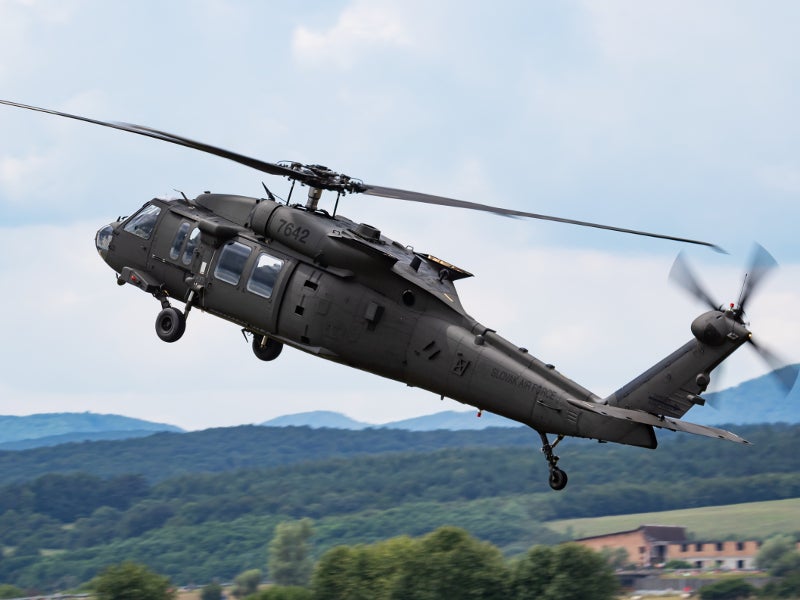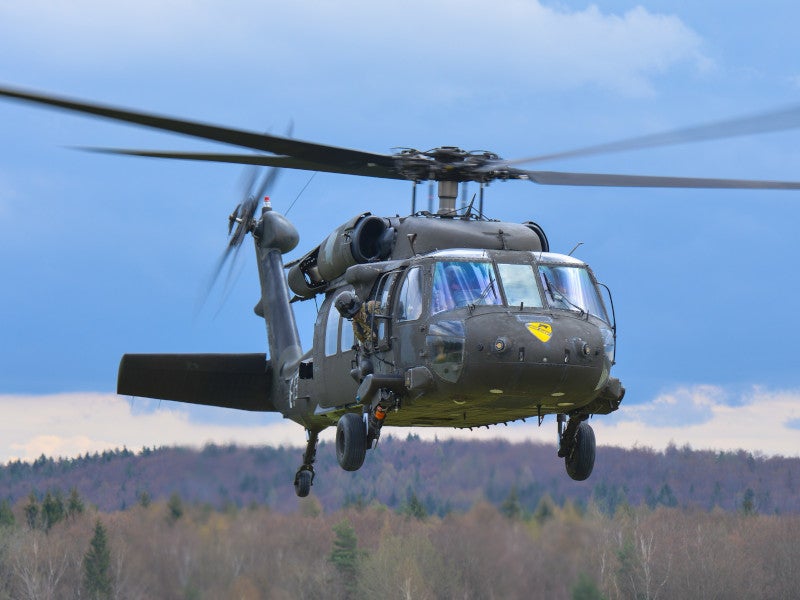Flying High: UH 60 Helicopter Safety And Security Protocols You Must Know
Flying High: UH 60 Helicopter Safety And Security Protocols You Must Know
Blog Article
Navigating Uh 60 Helicopter Laws and Compliance Requirements

Regulatory Framework Overview
The regulatory structure controling UH-60 helicopter procedures includes a complicated set of standards and regulations developed by air travel authorities. These policies are designed to make certain the effective and safe operation of UH-60 helicopters in numerous atmospheres. The Federal Aviation Management (FAA) plays a main role in developing and implementing these policies, which cover a wide variety of functional elements, including airworthiness criteria, pilot certifications, upkeep demands, and operational treatments.
Compliance with these laws is crucial for helicopter drivers to maintain the highest degree of safety and security and operational honesty. Failure to comply with these guidelines can result in significant repercussions, including mishaps, injuries, and regulatory permissions. Therefore, helicopter drivers must stay educated regarding the current governing advancements and make certain that their operations remain in full compliance with all relevant guidelines and criteria.
Airworthiness Examinations and directives
Amidst the regulative framework regulating UH-60 helicopter procedures, an essential emphasis pushes conformity with Airworthiness Directives and performing thorough inspections to support safety standards and operational reliability. Airworthiness Directives (ADs) are released by aeronautics authorities to address hazardous conditions in airplane, consisting of the UH-60 helicopter, and mandate particular actions to be taken by proprietors or drivers. Compliance with ADs is necessary, and failure to adhere to these directives can cause severe repercussions, including grounding of the aircraft.
Normal evaluations are extremely important to making sure the airworthiness of UH-60 helicopters. By sticking to a stringent examination regimen, drivers can find and address prospective concerns quickly, consequently enhancing the security and integrity of UH-60 helicopter operations.
Pilot Certifications and Training

Pilot training for UH-60 helicopters is comprehensive and covers a vast array of subjects, including airplane systems, emergency treatments, navigation, and mission-specific training. Additionally, pilots undertake simulator training to practice different emergency situation situations in a regulated environment. This training aids pilots develop the needed skills to manage tough circumstances effectively.


Furthermore, recurring training and specialist growth are necessary for UH-60 pilots to stay current with the most up to date regulations, technology, and ideal practices. By buying pilot credentials and training, operators can enhance safety and security, maximize performance, and guarantee conformity with governing resource demands in the operation of UH-60 helicopters.
Functional Limitations and Demands
Pilot certifications and training act as the structure for comprehending the operational constraints and demands connected with UH-60 helicopter procedures (uh 60). These operational restrictions are implemented to make certain the security of the staff, travelers, and the airplane itself. Operational limitations might include variables such as weather condition problems, weight limitations, elevation restrictions, and functional limits. It is vital for pilots to be well-versed in these constraints to make educated choices during trip procedures. Furthermore, conformity requirements, such as sticking to specific trip courses, interaction protocols, and emergency situation treatments, are vital for keeping operational safety and security and regulatory compliance. click here now Pilots have to stay present with all functional limitations and needs with normal training, briefings, and examines to minimize risks and make sure effective and secure UH-60 helicopter procedures. By prioritizing adherence to these operational guidelines, pilots can enhance the general safety and security and performance of their missions while maintaining governing Find Out More criteria.
Emergency Situation Procedures and Compliance Screening
Reliable emergency situation treatments and extensive conformity testing are vital elements of maintaining functional security and regulative adherence in UH-60 helicopter procedures. Emergency treatments incorporate methods for numerous situations, including engine failures, fires, hydraulic concerns, and much more. Pilots and crew members have to be skilled in these procedures to respond promptly and successfully in emergencies. Regular conformity testing ensures that the helicopter fulfills all regulative requirements stated by aeronautics authorities. This testing involves detailed examinations, checks, and examinations to confirm that the airplane is airworthy and in compliance with all relevant guidelines.
Furthermore, conformity screening might involve simulations of emergency situations to examine the staff's feedback and the helicopter's performance under tension. By prioritizing emergency situation treatments and conformity screening, UH-60 drivers can minimize threats and show their dedication to safety and regulatory compliance.
Conclusion
In final thought, adherence to regulative framework, compliance with airworthiness regulations, pilot certifications and training, operational restrictions, and emergency procedures are vital for navigating the policies and demands of operating a UH-60 helicopter. uh 60. It is essential for operators to prioritize safety and ensure full compliance with all applicable laws to keep the airworthiness and functional stability of the aircraft
Navigating the governing landscape bordering UH-60 helicopter operations demands a nuanced understanding of the intricate internet of policies and conformity demands.Compliance with these laws is crucial for helicopter drivers to preserve the greatest degrees of safety and security and functional stability.Amidst the governing framework controling UH-60 helicopter procedures, an important focus lies on conformity with Airworthiness Directives and carrying out comprehensive inspections to promote security standards and functional reliability.Reliable emergency situation procedures and thorough conformity testing are essential elements of maintaining functional safety and governing adherence in UH-60 helicopter operations. Normal compliance screening guarantees that the helicopter fulfills all regulatory needs set forth by aeronautics authorities.
Report this page